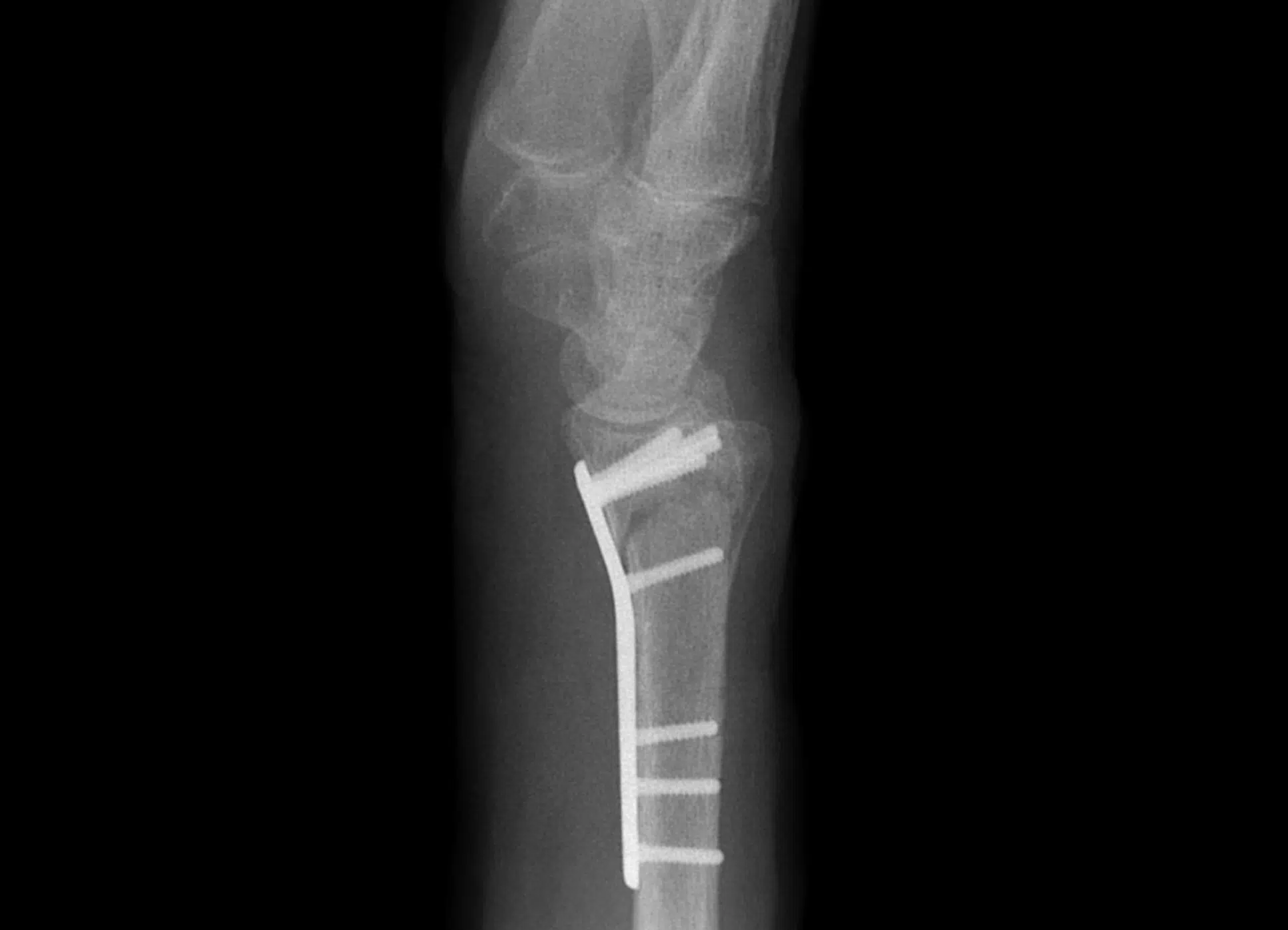Wrist plate osteosynthesis is indicated when a fracture is displaced or unstable. The procedure involves realigning the displaced bones, stabilizing the fracture and fixing it with an anatomical plate. The stabilized fracture can then consolidate in the correct position, and the patient can begin early rehabilitation to prevent wrist stiffness.
Leman hand clinic
Wrist fracture surgery
Fractures of the wrist are a common pathology requiring surgical intervention when the bones are displaced or the fracture is unstable. The surgery, called osteosynthesis, is performed as an emergency to ensure full recovery of wrist function.

What is wrist plate osteosynthesis ?
How to prepare before the surgery ?
Before any operation, Dr Bejic will see you in consultation and explain the best possible treatment, on a personalised basis. In the case of an intra-articular fracture, a CT scan is often requested to give a better view of the fracture and prepare for the surgery. An anesthesia consultation is also scheduled pre-operatively, time permitting. Patients are informed of pre-operative instructions, including fasting and the temporary withdrawal of certain medications.
What is the procedure for wrist plate osteosynthesis?
Wrist osteosynthesis is usually performed at the Nyon GHOL hospital or in a clinic. Anesthesia (general or axillary block) is administered by the anesthetist. The operation lasts between 45 minutes and 2 hours, depending on the procedures to be performed and the complexity of the fracture. The procedure is performed with hospitalization for post-operative monitoring and pain control.
Anatomical plate fixation
For displaced or unstable radius fractures, anatomic plate fixation is preferred. This method uses a thin plate adapted to the anatomy of the radius, secured by screws that lock into the bone and plate. An incision in the anterior aspect of the wrist provides direct access to the fractured bone. The surgeon takes X-rays on the operating table to check that the fracture has been reduced and that the plate has been optimally positioned. A cast immobilizing the forearm is applied at the end of the operation.
In most cases, surgery enables early rehabilitation, limiting hand and wrist stiffness.
What are the risks of the surgery?
As with any surgical procedure, wrist fracture surgery involves risks and complications related to the anesthesia or the procedure itself, such as :
- Infection
- Hematoma
- Secondary displacement of the fracture or material
- Joint stiffness
- Nerve damage
- Algodystrophy (Sudeck’s disease)
Post-operative monitoring with the surgeon helps to minimize these risks and rapidly treat any complications.
Wrist osteosynthesis : the recovery process
After wrist surgery, a thermoformed splint is made by the occupational therapist and immobilizes the wrist for 4 weeks, allowing the fingers and thumb to be used for daily activities. Occupational therapy and home rehabilitation generally begin as early as 15 days after surgery, if the fracture is stable and the bone is of good quality. The sutures are removed after 15 days, and the patient can wash his hand again and massage the scar with a greasy cream. Bone healing takes 3 months, or even longer in special cases.
The plate can be left in place, or removed after a year if it causes discomfort.
What is the outcome after wrist fracture surgery?
The results of wrist fracture osteosynthesis vary according to the severity of the fracture. In general, patients can expect to regain good wrist mobility. Occupational therapy plays an important role in achieving good results. Well-treated fractures enable patients to resume daily and professional activities within a reasonable timeframe.
To find out more about treatment options for wrist fractures, do not hesitate to contact our clinic. .